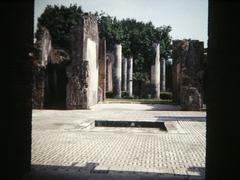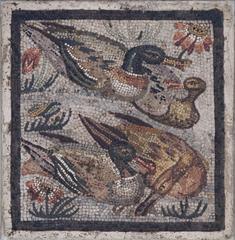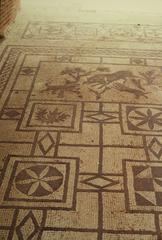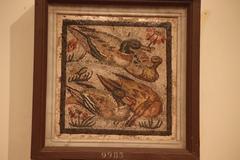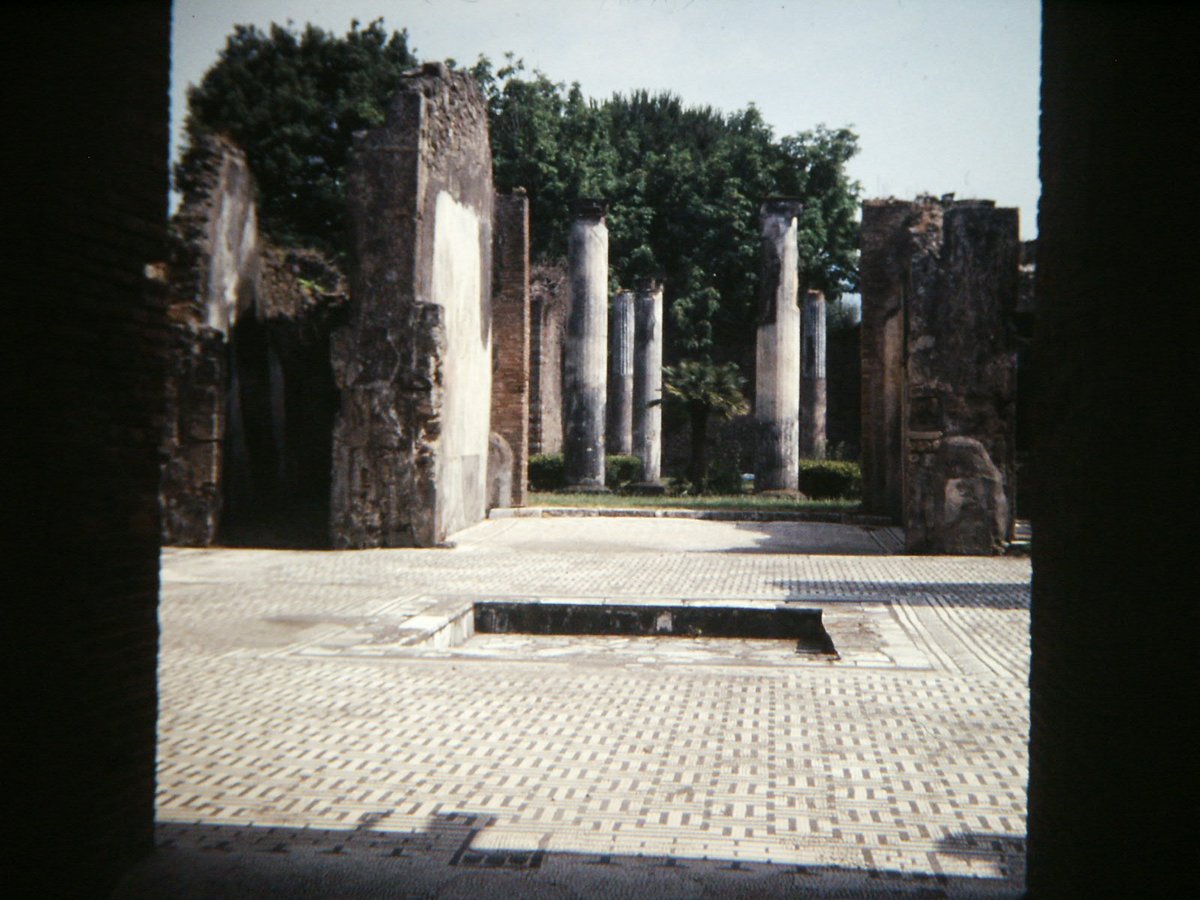
House of the Wild Boar Pompeii: Visiting Hours, Tickets, and Complete Guide
Date: 14/06/2025
Introduction
Nestled within the ancient city of Pompeii, the House of the Wild Boar (Casa del Cinghiale) stands as a remarkable testament to Roman domestic architecture, art, and social life—preserved in astonishing detail following the eruption of Mount Vesuvius in 79 CE. Located along the prominent Via dell’Abbondanza, this domus captivates visitors with its intricate mosaics, most notably the vivid wild boar hunting scene that gives the house its name. The site provides unique insights into the lifestyle, aspirations, and political engagement of Pompeii’s middle-class and minor elite residents.
Visitors can explore the House of the Wild Boar as part of the wider Pompeii Archaeological Park, a UNESCO World Heritage Site. Easily accessible from main park entrances and included with standard admission, the house is an essential stop for those seeking an immersive journey into Roman daily life. This guide covers historical context, visiting hours, ticketing, accessibility, nearby attractions, and essential visitor tips—ensuring a smooth and enriching experience. For in-depth visuals and resources, see Pompeii in Pictures, Pompei Sites, and the Official Pompeii Archaeological Park Website.
Table of Contents
- Historical Context and Archaeological Significance
- Architectural and Artistic Highlights
- Practical Visitor Information
- Accessibility
- Nearby Attractions
- Photography and Best Times to Visit
- Frequently Asked Questions (FAQ)
- Conclusion and Final Tips
- References and Further Reading
Historical Context and Archaeological Significance
Urban and Social Setting
Positioned in Regio VIII, Insula 3, No. 8, along Via dell’Abbondanza, the House of the Wild Boar was part of a lively neighborhood comprising homes, workshops, and shops, reflecting its owners’ integration into Pompeii’s socially mobile middle class or minor elite (Pompeii in Pictures). Pompeii itself was a thriving Roman city, its daily life frozen in time by the catastrophic eruption of Mount Vesuvius (The Independent).
Excavation and Conservation
The house was excavated in the early 19th century and has since been the focus of conservation efforts, including the use of 3D modeling and advanced imaging to protect its mosaics and frescoes (Pompei Sites). Political graffiti and iconography within the house provide insight into civic engagement and symbolic expressions of identity.
Architectural and Artistic Highlights
Layout and Design
The House of the Wild Boar exemplifies classic Roman domestic architecture, with a layout designed to balance privacy, social display, and functionality. The entrance (fauces) leads to the central atrium, flanked by cubicula (bedrooms) and service areas. Opposite the entrance, the tablinum (the master’s study or reception) transitions to the peristyle, a colonnaded garden that offered light, air, and tranquility (pompeii.pictures).
Key Features:
- Atrium and Impluvium: The atrium’s impluvium is bordered by curved amphora fragments, showcasing Roman resourcefulness, with a lava stone wellhead (puteal) for water access.
- Tablinum: Functions as a reception area and passage to the peristyle, reinforcing the master’s authority.
- Peristyle Garden: A private retreat with ornamental plants, fruit trees, and shaded walkways.
- Kitchen and Latrine: Practical service spaces separated from formal rooms, highlighting Roman design efficiency.
Artistic Elements
- Wild Boar Mosaic: The entrance corridor features a striking black-and-white mosaic depicting a wild boar hunted by dogs—a symbol of strength, leisure, and status (Guide Campania).
- Frescoes: Though much original decoration is lost, 19th-century drawings record frescoes of flying cupids and Dionysian motifs, reflecting the cultural sophistication of the household (medium.com).
- Graffiti: Electoral inscriptions near the entrance, such as endorsements for Holconius, offer a window into civic life.
- Decorative Techniques: The house’s decor combines painted plaster, stucco reliefs, and mosaics, using a lively palette of whites, yellows, blues, and greens (thecollector.com).
Practical Visitor Information
Visiting Hours
- April–October: 9:00 AM – 7:00 PM (last entry at 6:00 PM)
- November–March: 9:00 AM – 5:00 PM (last entry at 4:00 PM)
- Closed: January 1, May 1, December 25
The House of the Wild Boar may close occasionally for conservation work. Always consult the Official Pompeii Website for up-to-date access information.
Tickets
- Standard Adult: €16–€20 (varies by season and vendor)
- EU citizens 18–25: Reduced rate
- Children under 18: Free
- First Sunday of each month: Free entry
- Disabled visitors and companions: Free (with documentation)
Purchase tickets online in advance to avoid queues, especially during peak periods (Italy Sights).
How to Reach the Site
- By Train: Circumvesuviana line from Naples or Sorrento to Pompei Scavi-Villa dei Misteri.
- By Car/Bus: Ample parking near main entrances.
- On Foot: The house is easily reached from Porta Marina entrance.
Accessibility
Pompeii continues to improve accessibility through the “Pompeii for All” project, but visitors should note that ancient streets are often uneven and narrow.
- Wheelchair Access: Some main paths and houses are accessible; however, access to the House of the Wild Boar may vary depending on conservation work. Wheelchairs are available for rent at Piazza Esedra and Piazza Anfiteatro entrances (reserve in advance).
- Facilities: Accessible restrooms at main entrances; baby changing stations and stroller-friendly routes are available, though some terrain is rough.
- Sensory Accessibility: Braille panels and tactile models exist at select locations; inquire at ticket offices for audio guides and sign language support.
Nearby Attractions
Enhance your visit by exploring these nearby sites:
- House of the Ancient Hunt: Renowned for hunting-themed mosaics (Pompei Sites).
- Forum: Political, social, and commercial hub of Pompeii.
- Villa of the Mysteries: Famous for its enigmatic frescoes.
- Amphitheater and House of the Faun: Key examples of Roman public and private spaces.
Photography and Best Times to Visit
- Photography: Permitted for personal use (no flash/tripods/drones without authorization). Respect all barriers and preservation rules.
- Best Times: Early mornings and late afternoons offer softer light and fewer crowds. Pompeii is busiest from 10:00 AM–2:00 PM, especially April–October.
Frequently Asked Questions (FAQ)
Q: Is the House of the Wild Boar open year-round?
A: Yes, but may close temporarily for conservation. Always check the official website before visiting.
Q: Are guided tours available?
A: Yes, both group and private tours often include the House of the Wild Boar. Audio guides and mobile apps are also available.
Q: Is the site wheelchair accessible?
A: Accessibility is limited; some areas may be difficult for wheelchair users. Main paths are more accessible.
Q: Can I buy tickets for just the House of the Wild Boar?
A: No, tickets grant access to the entire archaeological park.
Q: Are there restrooms and refreshment options nearby?
A: Restrooms are located near main entrances; food options are limited, so bring water and snacks.
Conclusion and Final Tips
The House of the Wild Boar stands out as a must-see within the Pompeii Archaeological Park, offering a compelling glimpse into the artistry, architecture, and social life of an ancient Roman household. Its mosaics, frescoes, and graffiti vividly narrate stories of daily life, status, and politics. For the best experience, plan your route, purchase tickets online, wear comfortable shoes, and consider a guided tour or audio guide.
Pair your visit with other prominent sites like the House of the Ancient Hunt, Villa of the Mysteries, and the Forum for a comprehensive exploration of Pompeii’s rich urban landscape. For enhanced navigation and deeper insight, download the Audiala app or consult interactive maps online. Stay updated through the Official Pompeii Archaeological Park Website and follow their social media for news on events and site updates.
References and Further Reading
- Pompeii in Pictures - House of the Wild Boar
- Pompei Sites - House of the Ancient Hunt
- Guide Campania - Casa del Cinghiale
- The Independent - Pompeii discoveries
- Pompeii Official Archaeological Park Website
- Italy Sights - Pompeii Tickets and Hours
- Lonely Planet - Guide to Pompeii
- The Roman Guy - Pompeii Landmarks
- Pompeii Pictures - House of the Wild Boar Architectural Features
- Medium.com - Pompeii Discoveries
- thecollector.com - Discover Pompeii’s Famous Mosaics
Visual Suggestions:
Include high-quality images of the House of the Wild Boar’s mosaics and frescoes (e.g., wild boar mosaic at the entrance, atrium with amphorae border, peristyle garden columns). Provide descriptive alt text such as “Wild Boar Mosaic at House of the Wild Boar Pompeii” and consider embedding an interactive site map for navigation.
Internal Links Suggestions:
- [Top Pompeii Attractions to Visit]
- [Pompeii Tickets and Entry Information]
- [Complete Guide to Pompeii Archaeological Park]
Call to Action:
For interactive maps, personalized tour options, and the latest updates, download the Audiala app. Explore related articles on our website and follow us on social media for news and expert travel tips.
